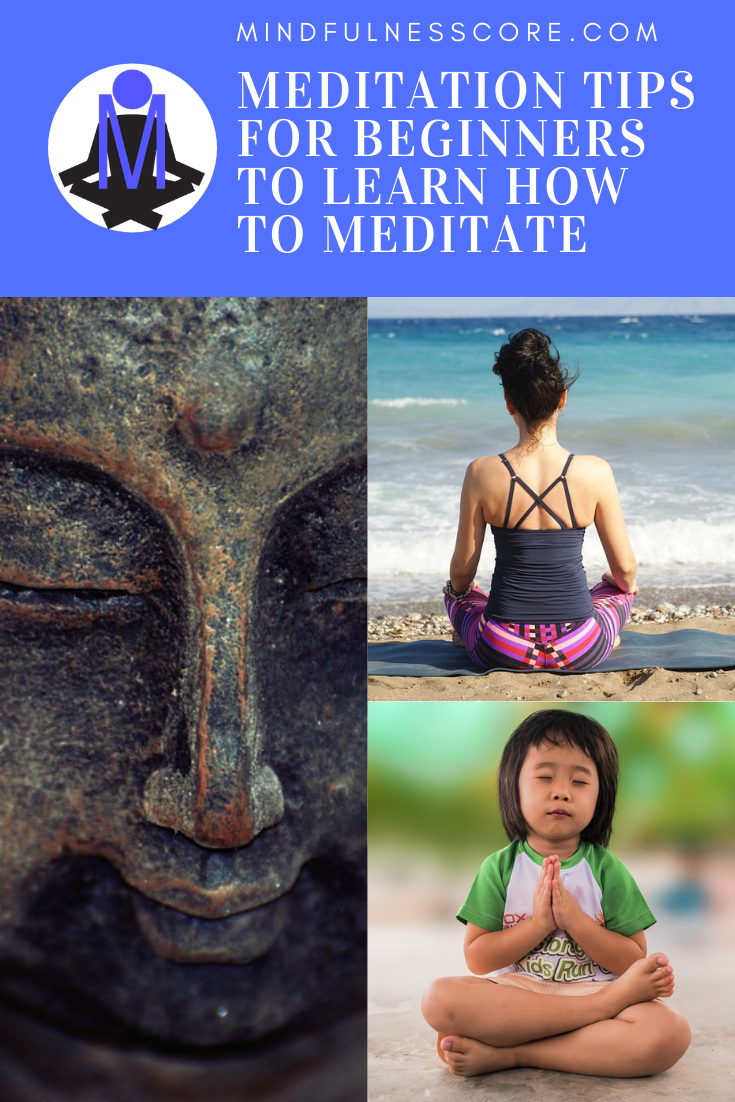Guided Meditation Techniques for Beginners to Learn How to Meditate

Common challenges that people face when they try meditation for the first time
For someone who takes his mental health any seriously, terms like meditation and mindfulness are not unheard of. In simpler words, meditation is the name of creating deeper awareness and understanding of our experiences. A few minutes of mindfulness practices have been associated with various benefits including a marked reduction in the level of stress, enhanced ability to cope with anxiety, prevention against the common mental disorders including depression, sharper focus, improved memory, mood restoration, and activation of the body’s natural relaxation response. As evident, the benefits of meditation are plenty. Considering the stressful environment of today where you are confronted with various pressures in your personal and professional life on a day to day basis, it is likely that you will naturally be drawn towards meditation.
Like any other habit, however, it takes practice, effort, and patience in order to master the art of meditation. Much like when you go to the gym for the first time and start lifting weight, there are countless times when your coach would tell you that you are doing the exercise wrong, your angle is not right, or you’re not hitting the right muscles. But then with practice, after a few months, you are trained enough to work out all by yourself without a coach. Similar is the case with meditation. When you start with meditation, there are going to be challenges that you’ll have to face. It is absolutely justified for you to be frustrated and think of giving up on the habit. In times like these, it is imperative that you keep the focus on the benefits and convince yourself to keep practicing until you get it right. In order to make this journey a little easier for you, we have taken the liberty of accentuating a few of the common challenges that people face when they take up meditation as a habit. By keeping you informed, we are sure that you’d be able to find a solution and get the most out of meditation for your mental and physical health.

I Can’t Get Rid Of The Thoughts
The first challenge that people face when they try meditation for the first time is that they are unable to clear their mind and remove all thoughts. The good news for you in this regard is clearing your mind of all thoughts is not the aim of meditation. It is a common misconception that meditation is aimed at removing all thoughts from the mind. Think of it this way; the primary function of the human brain is to be able to think. If it isn’t thinking, it is synonymous to it not working. Expecting your mind to have no thoughts at all during the episodes of meditation is like expecting your eyes to be open but not see anything on the queue.
Point being, thoughts are inevitable. Neither meditation nor any other practice has the ability to stop your mind from having different thoughts unless it was dead. In actuality, the purpose of meditation is to let the thoughts run through your mind but having the ability to have an objective perspective about your thoughts. Mindfulness is aimed at enabling you to observe your thoughts, even focus on them, without responding to them emotionally. This is actually why meditation is associated with the activation of the natural relaxation response of your body. It helps a great deal in keeping your calm as the negative thoughts, feelings, and emotions pop into your mind. It creates an ability for you to step back and view the situation with a different perspective and keep the focus on finding a peaceful solution.
So, the next time that you try meditation and are unable to drive the thoughts out of your mind, don’t be frustrated. You are not doing anything wrong. The goal is to prevent the emotional response. That’s it.
I Can’t Find A Comfortable Position
The second major challenge that is commonly faced by people who have just started to try meditation is the failure to find a comfortable position. Remember that you are trying to push your mind and body into something new. Nobody likes change, and your physical body and mind are no different either. It is going to retaliate against the change and try to make it harder for you to get comfortable and concentrate on meditation. At times, you’ll experience unwarranted pain, perhaps your feet will fall asleep, or you may find it hard to get rid of the itching sensation. There are a few things that you can do in order to cope with this challenge. First of all, of course, before you end up being annoyed, it is imperative that you keep reminding yourself that you are not the only one who is facing this issue. It is common for all beginners. Secondly, more often than not, the discomfort is rooted in the fact that you are trying to imitate the exact posture as your coach’s or the one that you read or heard about. It is to be kept in mind that not all postures work everyone. Just because your friend is comfortable while sitting with his legs crossed doesn’t mean that you are going to feel the same. A better idea would be to experiment around and see what works for you. The goal is to be comfortable; the position that brings it to you is entirely your own choice. Even if you find it hard to sit on the floor, you can even choose to sit on a chair.
Lastly, you can take these episodes to work on your mental calmness, peace, and to control your temper, especially in a frustrating time. Not to mention that controlling your temper and establishing a peaceful state of mind is one of the major goals of meditation in the first place. Therefore, if you see this challenge as an opportunity, you will still be meditating directly or indirectly. All you need to do is try and be objective in observing your pain. Focus on its nature, is it a throbbing pain or a mild one? Locate where the pain is coming from? Can you feel it moving from one part of the body to another? With time, you’d be able to overcome this challenge completely.
I Can’t Fight Being Sleepy
Lastly, a common challenge that you are likely to face as a beginner in the realm of meditation and mindfulness is an ability to fight being sleepy. It is true that the natural relaxation response of the body is activated with proper meditation. However, there is a fine line between being relaxed and being sleepy. It can be a challenge for some people to see that line. The whole point of meditation is to focus, on your thoughts, on a sound, on sight, etc. But it is understandable for the mind to lose focus as it gets sleepy.
If you think about it, being sleepy at times can be a defensive mechanism of the mind to avoid confrontation with difficult thoughts. It is common for us to try and distract ourselves to get rid of troubling thoughts. But during the times of meditation, as you are pushing your limits to face these thoughts and not be distracted, the only defense at the disposal of your mind is to make you fall asleep.
A few simple tweaks can help a great deal in handling this challenge. First of all, you should try changing the time of the day when you usually practice meditation. For instance, if you are habitual of practicing it after getting back from work in the evening, then switching the time to early in the morning right after you get out of bed could work like a charm. Changing the position can be effective as well. Try and make your posture as upright as possible. Avoid slouching or lying back. Sitting upright with a straight back is likely to improve alertness which will tackle the challenge of being sleepy. Most importantly, try to not be in sight of your bed when you are practicing meditation. Your mind is likely to have associated your bed with the feeling of being sleepy.
Conclusion
The benefits of meditation are plenty. They are attractive and have a remarkable impact on improving your personal and professional life. But you can’t entitle yourself to anything great unless you are willing to put an effort into it. Meditation sounds simple and easy to follow. But it still takes practice to master it. There are going to be challenges that you will have to overcome before you can get to your destination. The key here is to have self-compassion. Being too hard on yourself if you fail to do it right the first time around can only lead to frustration and eventually giving up on the practice. Give yourself a break and don’t expect perfection without giving it the proper time. You’ll get there, eventually. All you need is a little bit of time.


Pingback: How to Meditate for Beginners - Mindfulness & Meditation Exercises - Social Rabbit
Pingback: Guided Meditation Techniques for Beginners Common Challenges Report Launched | SproutNews
Pingback: Easy Meditations for Beginners to Learn How to Meditate – Internet Marketing Software
Pingback: How to Meditate: Meditation Techniques for Beginners – Survival Tools
Pingback: The Best Meditation Exercises for Beginners - The STREET Hearts
Pingback: Meditation Techniques for Beginners How to Meditate Properly - Skoool
Pingback: How to Meditate - Mindfulness Meditation for Beginners - ReLectures